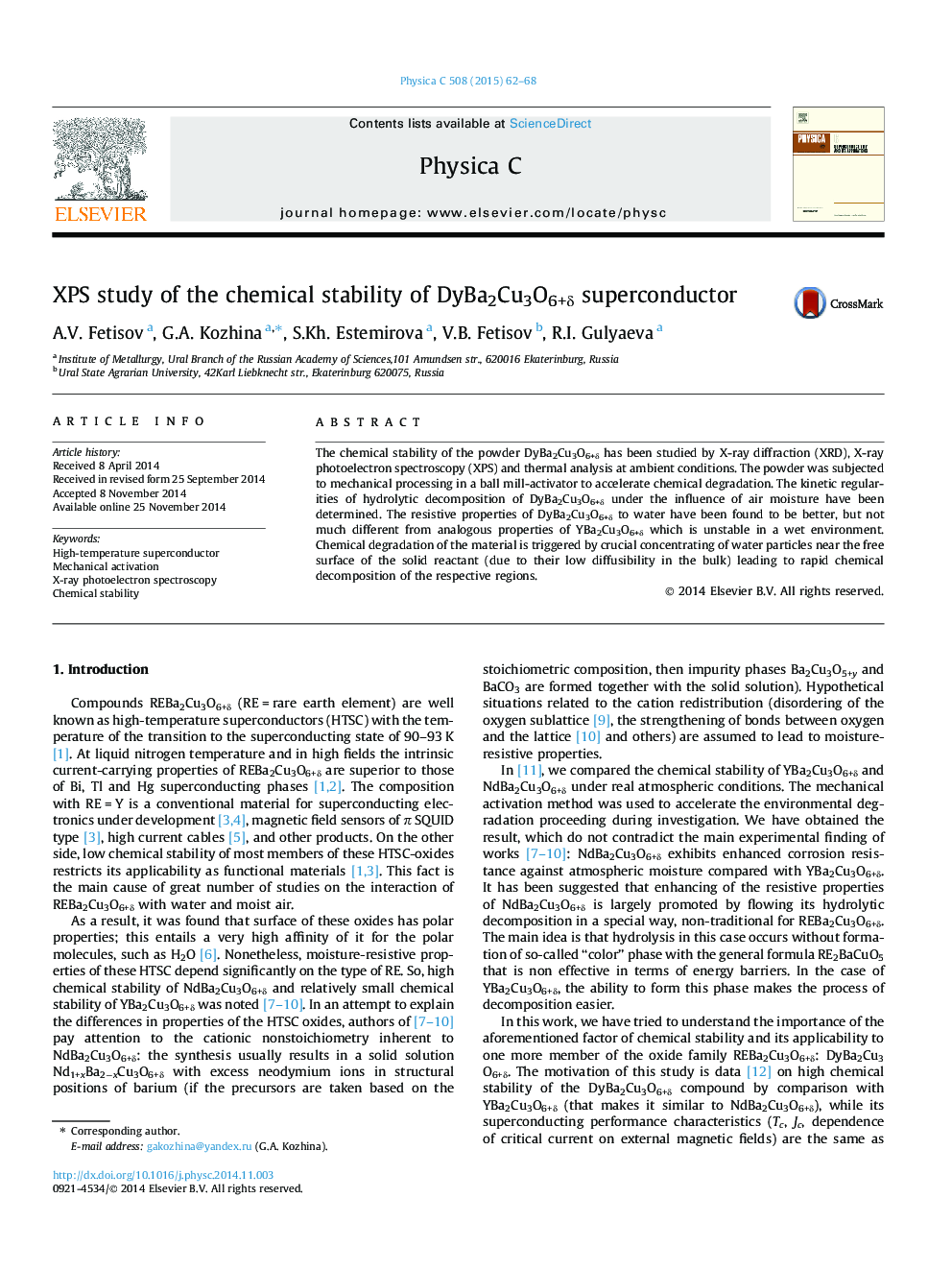| Article ID | Journal | Published Year | Pages | File Type |
|---|---|---|---|---|
| 1817626 | Physica C: Superconductivity and its Applications | 2015 | 7 Pages |
•The mechanism regulating stability of second generation high-temperature superconductors in a moist environment is studied.•Immobile water in the structure of (REE)Ba2Cu3O6+δ has been found to reduce the stability of the oxide.•DyBa2Cu3O6+δ shows slightly greater resistance to moisture than YBa2Cu3O6+δ.•Hydrolysis of DyBa2Cu3O6+δ is not accompanied by the formation of the “color” phase Dy2BaCuO5.
The chemical stability of the powder DyBa2Cu3O6+δ has been studied by X-ray diffraction (XRD), X-ray photoelectron spectroscopy (XPS) and thermal analysis at ambient conditions. The powder was subjected to mechanical processing in a ball mill-activator to accelerate chemical degradation. The kinetic regularities of hydrolytic decomposition of DyBa2Cu3O6+δ under the influence of air moisture have been determined. The resistive properties of DyBa2Cu3O6+δ to water have been found to be better, but not much different from analogous properties of YBa2Cu3O6+δ which is unstable in a wet environment. Chemical degradation of the material is triggered by crucial concentrating of water particles near the free surface of the solid reactant (due to their low diffusibility in the bulk) leading to rapid chemical decomposition of the respective regions.
